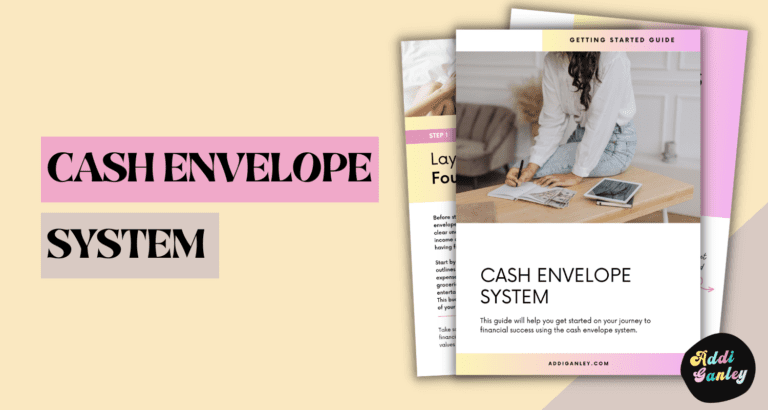
If you want a step-by-step guide to getting started with the cash envelope system for the budget plus printable envelopes, be sure to download it here.
Cash Folder Starter Guide:
-
10 beautifully designed, printable cash envelopes.
-
Ready-to-use tools to revolutionize your budgeting strategy.
-
Simplify money management with an efficient and elegant system.
-
Take control of your finances and watch your savings soar.
-
Make your financial dreams come true with ease.
Why you need cash envelopes to save money
The cash capital system is based on a unique psychological basis. The concept of parting with physical cash can greatly influence our financial decisions and help us have spending limits.
One of the key benefits of the cash capital system is increased financial awareness.
Starting with the cash envelopes
Before diving into the world of cash envelopes, it’s important to have a solid understanding of your financial situation. This section will guide you in evaluating your income and expenses.
The best place to start is to pull out all your financial documents so you have an accurate picture. If you’ve never created a budget, be sure to check ours out monthly budget spreadsheets; to get started.
The basis of this system is to set spending limits for each category that you usually spend money on each month. For example, you’ll set a spending limit on how much you can spend in the “eating out” category for the month.
Step #1: Assess your finances
Before you start using the cash envelope system, take a close look at your financial situation. This step involves understanding your income, expenses and financial goals. Consider the following:
-
Calculate your monthly income: Determine how much money you earn from all sources, including your salary, allowances and any other form of income.
-
Record your regular monthly expenses: This should include bills (rent/mortgage, utilities, insurance), groceries, transportation, debt payments, and any other recurring costs.
-
Identify irregular or one-time expenses: Be aware of upcoming expenses, such as annual memberships, car maintenance or holiday gifts.
-
Set clear financial goals: Decide what you want to achieve with your money, whether it’s building an emergency fund, paying off debt, saving for a vacation or investing for the future. Your goals will guide your budget.
Step #2: Identify the expense categories
Categorize your expenses into specific expense categories. This helps you allocate your money more efficiently. Common categories include:
-
Grocery goods
-
Eating out
-
Entertainment
-
Transport
-
clothing items
-
Personal allowance (for discretionary expenses)
-
Saving and paying off debt
-
Custom categories (for unique or irregular expenses)
Step #3: Set spending limits
Once you’ve identified your spending categories, set realistic spending limits for each based on your financial situation and goals. Consider your income, expenses and the need to set aside money for savings and debt repayment.
It is important that the total amount you have in all categories does not exceed your monthly income. This step ensures that you are living within your means and working toward your financial goals.
These initial steps lay the foundation for your cash capital budget. Once you’ve assessed your finances, categorized your expenses and set spending limits, you can move on to the practical aspects of creating and filling your cash folders to start managing your money effectively.
Stick to your budget with cash envelopes
Detailed instructions on how to track your expenses with cash envelopes can be found in the getting started guide.
Life is unpredictable and your budget may need adjustments. You will need to adjust your allocations or spending habits when this happens. It is OK. It takes time to get used to this method.

